Stuart Pecan Tree
- September 18, 2023
- 0 comment
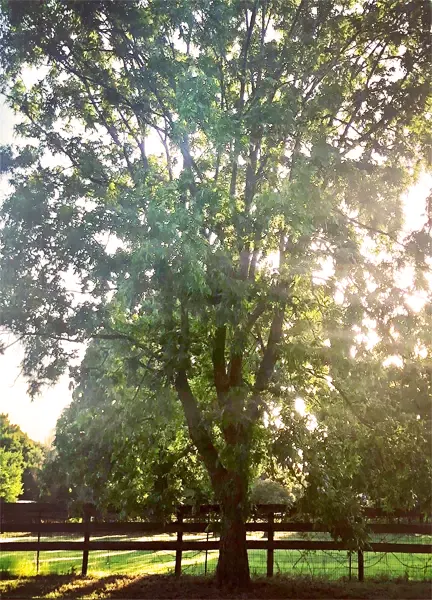
- Common Name: Stuart Pecan Tree
- Botanical Name: Carya illinoinensis ‘Stuart’
- Family: Juglandaceae
- Plant Type: Deciduous Tree
Lumber
Stuart Pecan trees yield valuable lumber, primarily used for furniture and flooring due to their attractive grain pattern and durability.
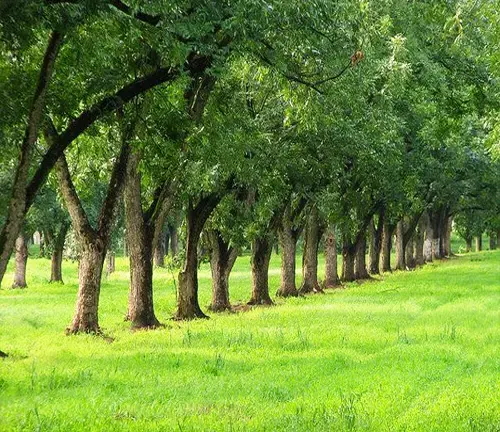
Mature Size and Growth Rate
Stuart Pecan trees are renowned for their impressive size and can reach heights between 70 to 100 feet with a canopy spread of 40 to 75 feet. They are considered moderately fast growers, typically adding 1 to 2 feet of height each year under optimal conditions.
Soil Type
Stuart Pecan trees thrive in well-drained soils, but they are highly adaptable and can tolerate a variety of soil types, including clay, loam, and sandy soils. This adaptability makes them suitable for a wide range of planting locations, from loamy garden soil to heavier clay-based soils, as well as areas with sandy compositions. However, ensuring good drainage remains essential for overall tree health and nut production.
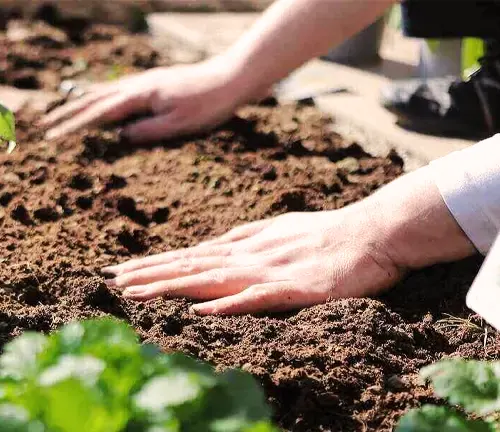
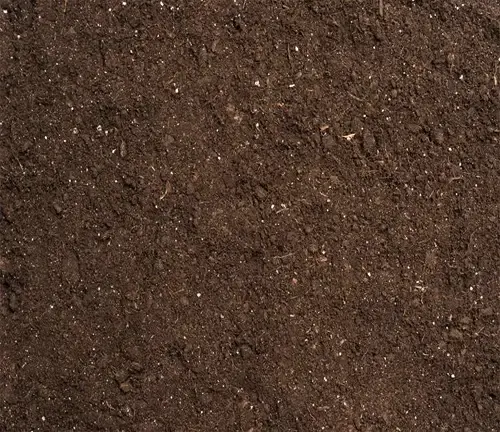
Soil Preferences
Stuart Pecan trees favor soils with a pH range of 6.0 to 7.0, leaning slightly toward the acidic to neutral side. Maintaining this pH range is crucial for optimal nutrient uptake and healthy growth. Soil testing and appropriate amendments can help ensure that the soil meets these preferences, promoting vigorous tree development and nut production.
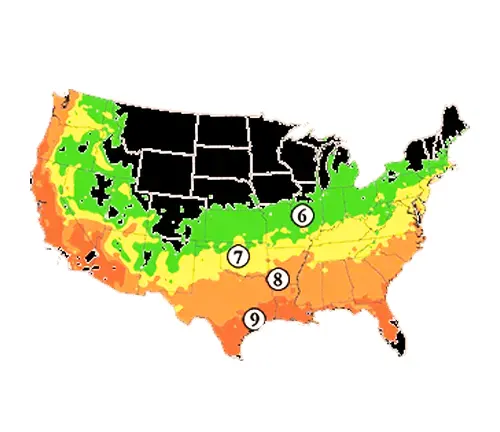
Hardiness Zones
Stuart Pecan trees are well-suited to USDA hardiness zones 6 to 9, making them suitable for a broad range of climates in the United States.
Sun Preference
They are sun-loving trees, requiring full sun exposure for at least 6 to 8 hours a day to produce abundant nuts.

Attributes and Characteristics
Stuart Pecan trees are known for their majestic stature and open, spreading canopy of feathery, pinnate leaves. In the fall, the foliage turns a brilliant golden yellow before dropping. These trees produce oval-shaped, thin-shelled, and delicious pecan nuts, making them a favorite among nut enthusiasts.
Wildlife Value
Stuart Pecan trees are a valuable resource for wildlife. The nuts are a significant food source for squirrels, deer, and various bird species, making them a popular choice for wildlife enthusiasts and hunters.
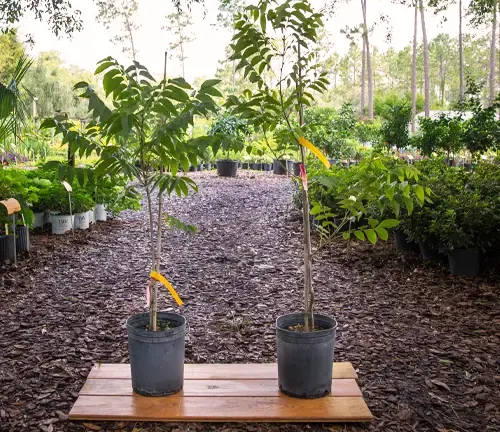
Care
These trees benefit from regular pruning to maintain their shape and remove dead or diseased branches. Adequate water during dry spells and mulching around the base of the tree are also essential for healthy growth.
Benefits
Stuart Pecan trees offer numerous benefits. They provide shade, produce a bountiful harvest of tasty nuts, and enhance the landscape with their striking appearance. Additionally, pecans are a nutritious food source, rich in healthy fats, protein, and essential minerals.
Invasive
Stuart Pecan trees are not considered invasive and are well-behaved in landscaping settings.
Lifespan
When properly cared for, Stuart Pecan trees can live for over a century, with some reaching ages of 150 years or more.
Disadvantage
While the nuts are a sought-after crop, they can create a litter problem in residential areas, requiring regular cleanup.

Edible or Not
Yes, the pecan nuts produced by the Stuart Pecan tree are highly edible and a popular ingredient in a wide range of culinary applications.
Habitat Requirements
These trees are native to the southern United States and are well-suited to regions with warm summers and mild winters. They thrive in areas with adequate rainfall but are drought-tolerant once established.
Name of Origin
The Stuart Pecan tree is named after John F. Stuart, a prominent nurseryman who played a significant role in promoting and popularizing the pecan industry in the late 19th and early 20th centuries.

Varieties
Stuart is just one of many pecan varieties available, each with its unique flavor and characteristics. Other popular pecan varieties include Desirable, Pawnee, and Elliot.
Pruning
Pruning should be performed during the dormant season to remove dead or diseased branches and shape the tree. It’s essential to follow proper pruning techniques to avoid damaging the tree.
Propagating
Stuart Pecan trees are typically propagated from grafted rootstock, as they do not come true from seed. This means that planting nuts from a Stuart Pecan tree may not produce a tree with the same desirable characteristics.

Common Pests & Diseases
Pecan trees are susceptible to various pests and diseases, including pecan weevils, aphids, and scab fungi. Regular inspection and proper care can help prevent and manage these issues.
Fun Facts
- The pecan is the state tree of Texas and a symbol of the Southern United States.
- The Stuart Pecan tree is famous for producing large, high-quality nuts.
- Pecans are not technically nuts but are classified as drupes, like peaches and plums.
- Pecans were a staple food for Native American tribes in the southern United States long before the arrival of European settlers.
Explore our Forestry Services today and experience the difference – seize the opportunity to enhance your journey!
FAQs
- How long does it take for a Stuart Pecan tree to produce nuts?
Stuart Pecan trees typically begin producing nuts when they reach 6 to 10 years of age, although it can vary depending on growing conditions. - Are Stuart Pecans self-pollinating?
No, Stuart Pecan trees are not self-pollinating. They require cross-pollination with another pecan variety for successful nut production. - Can I grow a Stuart Pecan tree in a small garden?
Due to their large size, Stuart Pecan trees are not suitable for small gardens. They require ample space to reach their full potential. - How do I protect my pecan crop from pecan weevils?
To protect your pecan crop from pecan weevils, you can use specialized traps and insecticides, but it’s essential to follow the recommended guidelines for safe and effective pest control.
In conclusion, the Stuart Pecan Tree stands tall as a symbol of beauty, bounty, and tradition. With its majestic stature, delicious nuts, and adaptability to various soils, it not only graces our landscapes but also enriches our lives. Whether you’re a seasoned gardener or a nature enthusiast, planting a Stuart Pecan Tree is an investment in the future, offering generations to come to the pleasure of its shade and the delight of its harvest. So, consider adding this remarkable tree to your green space, and let the legacy of the Stuart Pecan Tree continue to grow.


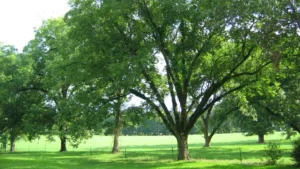
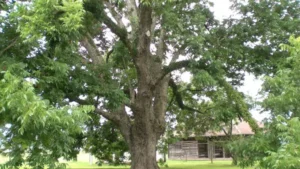
Leave your comment